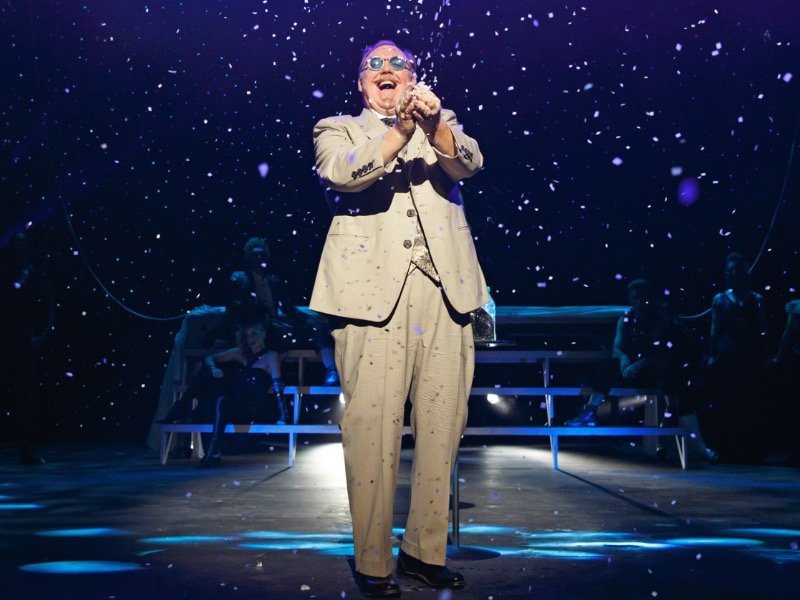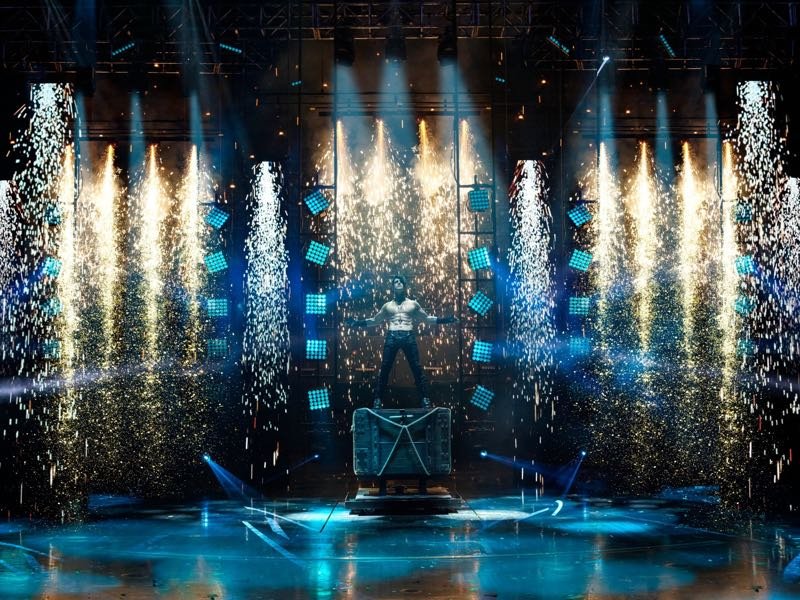On Tuesday night, on the most romantic night of the year, a man will be cut in half with a chainsaw on the Marcus Center stage. Don't worry; no need to call 911. This is all to be expected – and plus, after going their separate ways for a bit, the two halves will be literally stapled back together. Good as new!
The, uh, unorthodox medical procedure is magician Kevin James' favorite effect – his buzzsaw-bifurcated assistant would likely disagree – one that helped make him a nationally recognized name on "America's Got Talent," as well as just one of the mystical, mesmerizing tricks that he will bring to Milwaukee for a six-day stint as a part of the Broadway-born "The Illusionists" tour. Alongside James – aka The Inventor, thanks to his reputation as both a performer and a developer of illusions for other magicians – will be six other renowned conjurers, each bringing their own particular styles and specialties to the business of blowing minds.
Before they hit the stage, however, we got a chance to chat with James about his small-town Midwestern child magician origins, creating illusions in an internet era and the process behind making a magic trick really tick.
OnMilwaukee: You talk about, as a kid, seeing your first magic trick and being inspired to become one from there. Do you remember which magician it was or what trick so impressed you?
Kevin James: It’s funny; I don’t remember who he was. It was in my school, and we were just in a little village – we were 2,000 people in the whole village, so you can imagine what our elementary school was like. He came and just did a show in the gymnasium for everybody, and I was just blown away.
I remember one trick he did that stood out was he placed an alarm clock on a tray – like an old-fashioned style alarm clock – covered it with a cloth, turned on the ringer so you could hear it ring and then lifted it up to show it one last time. And then you heard the ring go off, he dropped the cloth, and the clock had vanished. Now I realize that’s a classic trick, but back then, it was just a miracle. (laughs) So it’s kind of funny what will pull you into this whole way of life.
How does one, as a child, learn and train magic in such a small Midwest town?
And before the internet. (laughs) It was basically me and six library books. I was the only one checking them out over and over and over. There were no other magicians in town and no one I could really talk to about it.
So one day, I was talking to an elderly neighbor, and he said, "You know, I think there’s some kind of magic place about an hour drive away from here." And he told me about a place called Colon, Michigan – make your own jokes there. (laughs) It was literally a one-hour drive – which is still pretty far when you’re 10 – but my parents would take me over there.
It was like an old, classic magic shop out of the 1930s, with the creaky wooden floor and the smell was musty. It was just an amazing place. They had these big theatrical playbills posted on the ceiling, covering the whole thing, so I’m just walking around looking at the ceiling. Something inside me just knew that this was where I should be.
Is it harder to be a magician now in this internet age where people can record your tricks or read up on them and that it’s a more cynical age where we're more aware about special effects and things like that?
A lot of my friends, some of them love YouTube, and some of them can’t stand it. They think they’re going to have their act stolen if they put it up on YouTube, and others think it’s a great promotional tool. So it’s a personal attitude, and the way you kind of maneuver through it is I think you have to embrace it somehow. I think if Houdini were alive today, he’d be all over the internet. He was an amazing promoter and knew how to use the medium of the day. So I think magicians should find ways to embrace it.
What was the hardest trick or the one that took the longest to make stage-worthy?
It’s funny because you’ll work on something, and you’ll get it on stage, but you’ll feel like it’s at 80 percent – and then it’ll take you 20 years to find that other 20 percent. Something will click later on.
I do this effect with a little girl in the middle of the audience, where I take a piece of paper, crumple it into a little ball and it starts to dance and animate. She can’t see how it works, and you’ve got a high-def camera zoomed in on her expressions. But when I first started doing that effect about 25 years ago, I used a twenty-something from the audience normally, but they were always worried about how their hair looked or self-conscious about being up there. Then I twisted it into a paper flower, and it levitates – and now it’s got a romantic feel to it, so they’re thinking, "Is this guy trying to pick up on me?" so that adds to the vibe. And that’s not my character at all; maybe David Copperfield can be the Rico Suave guy, but that’s not really my voice.
So one day, there were no young ladies – it was an all-older group – so I pulled up a 70-year-old lady and did the effect with her. It just changed the whole vibe; it was very innocent. How often does your grandmother get a real rose? It’s very sweet – and it just changed everything. And then I thought let’s go to the opposite end of the spectrum, so another time, I brought a 5-year-old girl up and we did it with her – and it just made it totally beautiful and innocent. At some moment in the routine, I give her the power to make the thing animate, and the look of sheer wonder that comes across her face just sends electricity through the crowd.
But it took me 20 years to figure that out. I was doing the trick for such a long time, and then one little thing will click, and you’ll realize, "Oh, now that’s how it’s supposed to be done." It took about a year to get the initial trick up, but then it took 20 years to figure out how to do it right.
Your persona is The Inventor, one you’ve earned from years of helping to invent tricks as well as performing them. Which do you like more: the inventing or the performing?
I like them both equally. The process of creating an effect is so soul-fulfilling for me. It starts with a little scribble on a napkin and then it gets to the cardboard stage where you build something out of cardboard just to see if you got the dimensions right and if the thing will work. Then you tweak it – and then you get to the wood and the metal stage. And then finally you’re rehearsing it. And then comes the day where you’re actually going to do it in front of an audience.
And when they appreciate it – they applaud or they laugh at the right moments – that whole process is like having a baby. It’s a wonderful, exciting, sometimes difficult birth (laughs) but you love it in the end – and it’s something I’ll be happy to do the rest of my life.
As much as it is a gigantic cliché to say that one has always had a passion for film, Matt Mueller has always had a passion for film. Whether it was bringing in the latest movie reviews for his first grade show-and-tell or writing film reviews for the St. Norbert College Times as a high school student, Matt is way too obsessed with movies for his own good.
When he's not writing about the latest blockbuster or talking much too glowingly about "Piranha 3D," Matt can probably be found watching literally any sport (minus cricket) or working at - get this - a local movie theater. Or watching a movie. Yeah, he's probably watching a movie.





